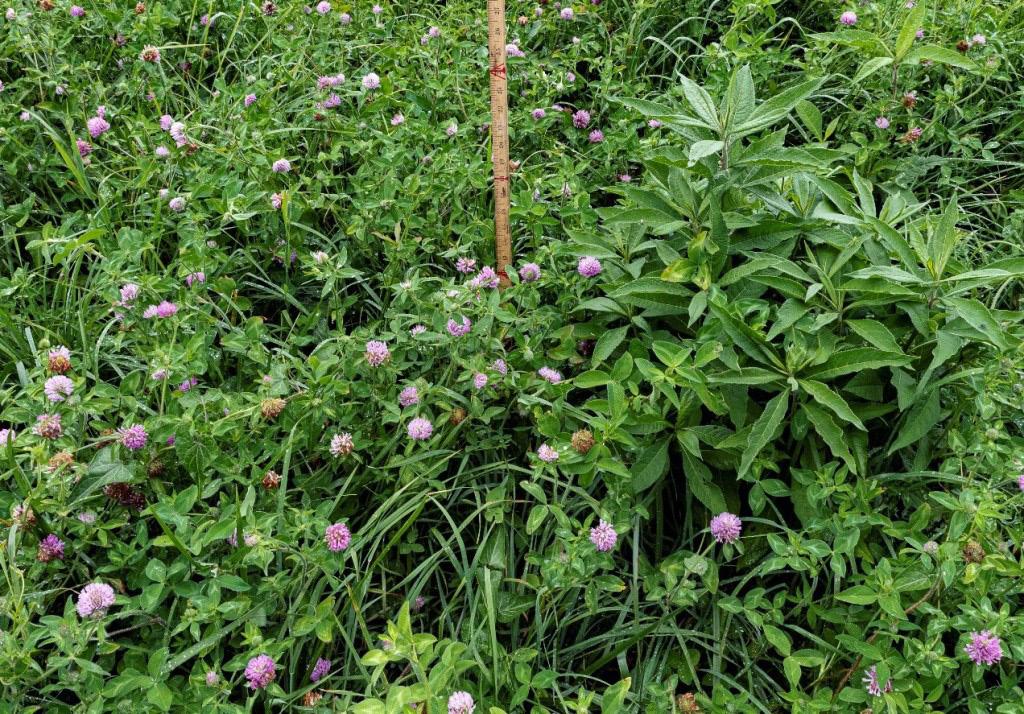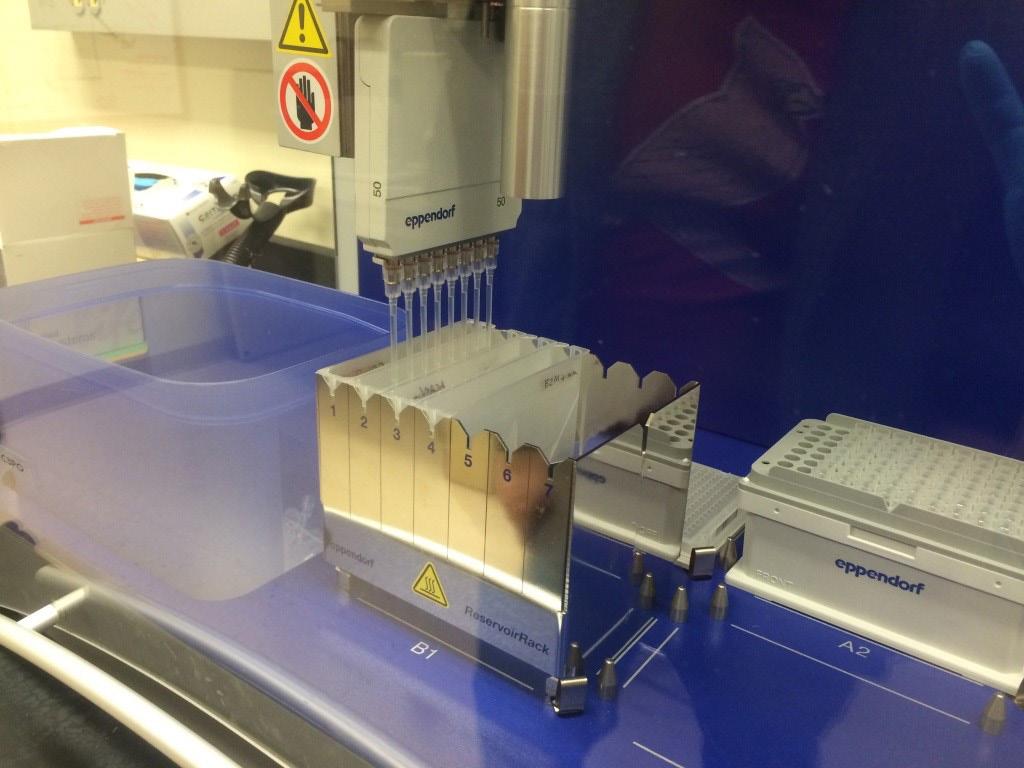
32 minute read
MEDICINE
from Equine Science Review: highlighting research and outreach efforts at the University of Kentucky
HARNESSING THE POWER OF BIG DATA HOLDS PROMISE FOR EQUINE PRECISION MEDICINE
It might seem a paradox. By starting with an enormous amount of data, data sets so large they can only be explored via supercomputers, there is now the possibility of customized medicine precisely tailored to a single, individual horse.
Advertisement
This innovation in equine medicine follows the work that has been going on in human medicine. It is built on the foundation of the first whole-genomic DNA sequence of the horse, called the Equine Reference Genome, an accomplishment widely considered to be one of the most important in equine science to date.
Behind the computer screens, finding patterns in the hundreds of terabytes of data generated through genetic and genomic studies on the horse, is Ted Kalbfleisch, PhD, associate professor at the University of Kentucky’s Gluck Equine Research Center.
Kalbfleisch specializes in bioinformatics, an interdisciplinary field that combines biology, computer science, information science, mathematics and statistics to analyze and interpret biological data. The growing need for and promise of that interpretation is why Kalbfleisch’s name appears next to the researchers leading several of the studies currently being done at the Gluck Center that have a genetic or genomic component to them. (Genomics is the study of all the DNA, or the genome, including genes and interactions of those genes with each other and the horse’s environment.)
“Those reference genomes are the foundation of nearly all genetic and genomic work that is being done in horses, and in fact, across nearly all human health related organisms and agricultural species. The reference genomes that have emerged in the last decade have been transformative in the way we do science,” he said. “The word unprecedented is thrown around a lot these days, but to be clear, the revolution that assembled genomes have driven in health science is truly without precedent in any other field of science. All that said, these are still very early days in this new era.”
According to Kalbfleisch, the ultimate objective of using “big data” and the promise it holds for equine health outcomes is what is being called “precision medicine” in clinical applications with both human and veterinary patients.
He said he looks at it this way, “Given everything that can be known about an animal, its genome, the genomes of the bacteria working away in the animal’s gut, what can we do specifically for that animal to increase the odds that it lives a healthy, productive life? And if it does become ill, what can we do to make certain the treatment is tailored to that animal to ensure recovery without side effects, or other collateral damage?”
In a chapter he and James MacLeod, VMD, PhD, John S. and Elizabeth A. Knight chair at the Gluck Center and director of UK Ag Equine Programs, co-wrote for a recently published textbook (Vet Clin North Am Equine Pract. 2020 Aug;36(2):173-181. doi: 10.1016/j.cveq.2020.04.002), they
PHOTO CREDIT: PHOTOS.COM.
explained that the applied aspects of genomics are now coming to fruition in many areas of equine science and veterinary medicine, including the emergence of what they call equine precision P4 medicine: predictive, preventative, personalized and participatory.
An excerpt from that book chapter:
This is the dawn of P4 medicine. Fortunately for horses and the people who care about them, equine science and equine veterinary medicine are well-positioned to participate. Precision medicine, earlier referred to as personalized medicine, is now an established concept that has become a major driver for transformative changes underway in health care and biomedical research. Each individual patient, as opposed to a large group or population of patients, is the focus. This is true for human and veterinary patients, including prophylactic, diagnostic, therapeutic and patient monitoring applications.
Shifting the emphasis of health care from treating disease (reaction) to maintaining health (prevention), or at least balancing these relationships, is a foundation of the changes underway.
THE EQUINE GENOME
The first version of the human reference genome was published at the beginning of 2000. This achievement took approximately 10 years, the efforts of hundreds of scientists and a global investment of several billions of dollars to complete.
A horse has 31 pairs of autosomal chromosomes, half coming from the sire and the other half from the dam. Each horse’s genome has about 2.5 billion bases of DNA. The first whole genomic DNA sequence of the horse, a map of the DNA of a Thoroughbred mare named Twilight, was completed in 2007 and published in 2009. This achievement included contributions from MacLeod and Ernest Bailey, PhD, professor at the Gluck Center. In 2014, the equine genomics research community began a project to improve the reference sequence for the horse, a project led by Kalbfleisch that included contributions from MacLeod and Bailey.
By re-analyzing DNA from the original horse reference genome, scientists generated a more than tenfold increase in data and types of data to correct thousands of errors in the original sequence. In the years since the first equine genome was published, costs associated with generating genome sequences have also seen a change. Now, for around $1,000 and the
appropriate computer software and expertise, a genome sequence can be generated for an animal. This means that equine scientists and veterinarians could soon be able to fully and routinely sequence and analyze the genomes of horses in research and clinical settings.
According to Kalbfleisch and MacLeod, the possibilities now exist that in the coming years, we will likely be able to predict
THE FIRST WHOLE EQUINE GENOMIC DNA SEQUENCE WAS COMPLETED ON A THOROUGHBRED MARE, TWILIGHT, FROM CORNELL UNIVERSITY. PHOTO COURTESY DR. DOUG ATCZAK.
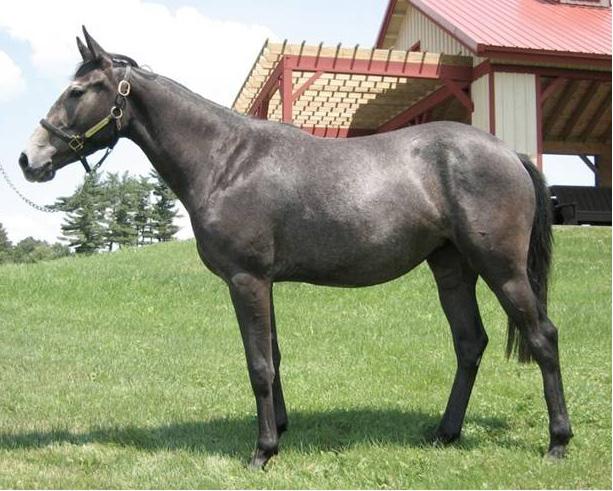
simple and complex phenotypes, or physical characteristics that may take years to express themselves, while adjusting management and other environmental variables to minimize or even avoid the impact of disease predispositions. Some of the less complex gene-phenotype disease relationships are already well understood. In other words, precision medicine is upon us.
WHAT IS BIG DATA?
The amount of information created through these studies and by the creation of a genome is enormous. This “big data” and finding patterns in that data is where Kalbfleisch comes in.
He explains the progression of in-formation and the ability to analyze that information.
“Since the late 1990s, the way research is done has been turned a bit on its head,” he said. “We used to ask very specific questions when we would perform measurements to study the molecular biology of living systems. With the limited information we had with respect to the genome, it was difficult to design assays (analyses done to determine the genomic composition of something) that were both sensitive and specific enough to provide the answers needed, but scientists persevered.”
Kalbfleisch said that the technology that allowed researchers to study tens of thousands of genes at once and the data necessary to design the research questions on those data was coming online during that time.
“Now instead of generating a handful of data points, we were generating hundreds of thousands of data points. And then we weren’t simply asking questions about how one gene might behave, but how it and a network of other genes might cooperate in a pathway that drives biological function,” he said. “All of a sudden our notebooks were insufficient, and we needed big disk drives for storage, and big computers to analyze all of this data. About 10 years later, things got more interesting still when we could sequence genomes and transcriptomes in a completely unbiased fashion. At this point, we began generating billions of datapoints to pose even the most routine of research questions.
“Any sensible person would ask, ‘When specific questions worked so well for so long, why spend time and money to generate and deal with all of this data, most
of which you won’t need?’ It turns out that it is often less expensive, nearly always faster and always more accurate to generate all of the data than to try to query specific bits of it in the context of a research study,” he said. “And although it is true that much of the data is irrelevant to what is ultimately found to be the answer to the research question at hand, going into the project, we usually have no idea what subset of the data the important bits will be. We know a lot, but what we don’t know dwarfs what we do. And, as important, all of these data are still biologically information rich, and are an incredible resource when made available to the research community through public repositories.”
When asked just how big a change “big data” has brought, Kalbfleisch explained, “I’ve heard it said that the entire recorded history of mankind, up through the year 2000, would have fit into about a terabyte of storage. Now, just about any research project in genetics or genomics will generate at least that much, if not a lot more. My research program alone has 300 terabytes of storage to manage the data my collaborators and I generate. Although it might sound daunting, what has emerged over the last decade in terms of computing power, storage capacity and sophisticated algorithms capable of analyzing all of this data has exceeded our demands. As a result, given a well-defined research question with high quality samples, it is a relatively straightforward process to winnow from these vast quantities of data the information we need to understand the molecular biology of these magnificent animals.”
WHAT ARE SOME SPECIFIC AREAS OF PROMISE USING THIS DATA FOR EQUINE MEDICINE?
There are many applications for matching the genetic information found in all this data with the specific medical treatment needed for a single horse. Kalbfleisch outlined a few examples, “Some relatively low hanging fruit one could imagine are more precise targeting of antibiotics. If, for example, you could know for certain what strain of bacteria was making your horse sick and you could avoid using an antibiotic to which that strain of bacteria was known to be resistant, that would be a very good thing. If you could identify a gene or genes that were transcribed at high levels when a horse was experiencing an unhealthy level of stress on bones or joints, you could opt to rest it until it was healthy. If you know of a particular bad trait that runs in a pedigree, you could look at the genomes of affected and unaffected individuals in the pedigree and identify the genetic component responsible for the trait, and in turn make herd management decisions based on whether or not a horse had the genotype for the trait.”
It’s a statistical tool that Kalbfleisch said is a bit like playing a game of “one of these things is not like the other” to determine what traits a population has in common and the traits that might be missing or rare in another population.
ENSURING GENETIC DIVERSITY IN THE DATA
One thing Kalbfleisch has been working to improve in the area of genome resources is to add in more genetic diversity. Consider that the Equine Reference Genome is based on a Thoroughbred mare from Cornell named Twilight.
According to Kalbfleisch, the reference works very well for Thoroughbreds and other breeds close to the Thoroughbred but has deficiencies when it comes to other breeds of horses that are more distant.
“The fact that these other breeds aren’t well served by the Twilight reference is a serious problem since many of these differences are likely the very genetic components that distinguish these breeds from the Thoroughbred and, as such, are essential to understand if you hope to do genetic research on them,” he said. “The single reference for the horse is analogous the Model T in cars. And much as with the automobile industry, in the near future, we will begin to see a proliferation of new and varied genomes such that ultimately each major breed has its own. It will be difficult for the research community to manage all of this, but as technologies and our computing infrastructures become more powerful, it is certain that these new resources will make it possible for us to better understand the genetic basis of health in horses.”
He and colleagues are now working to collect samples to catalog genetic diversity across North American Thoroughbreds.
“Genetic diversity is important in any species or breed, and very little is known with respect to the population structure of this wonderful breed. We are working
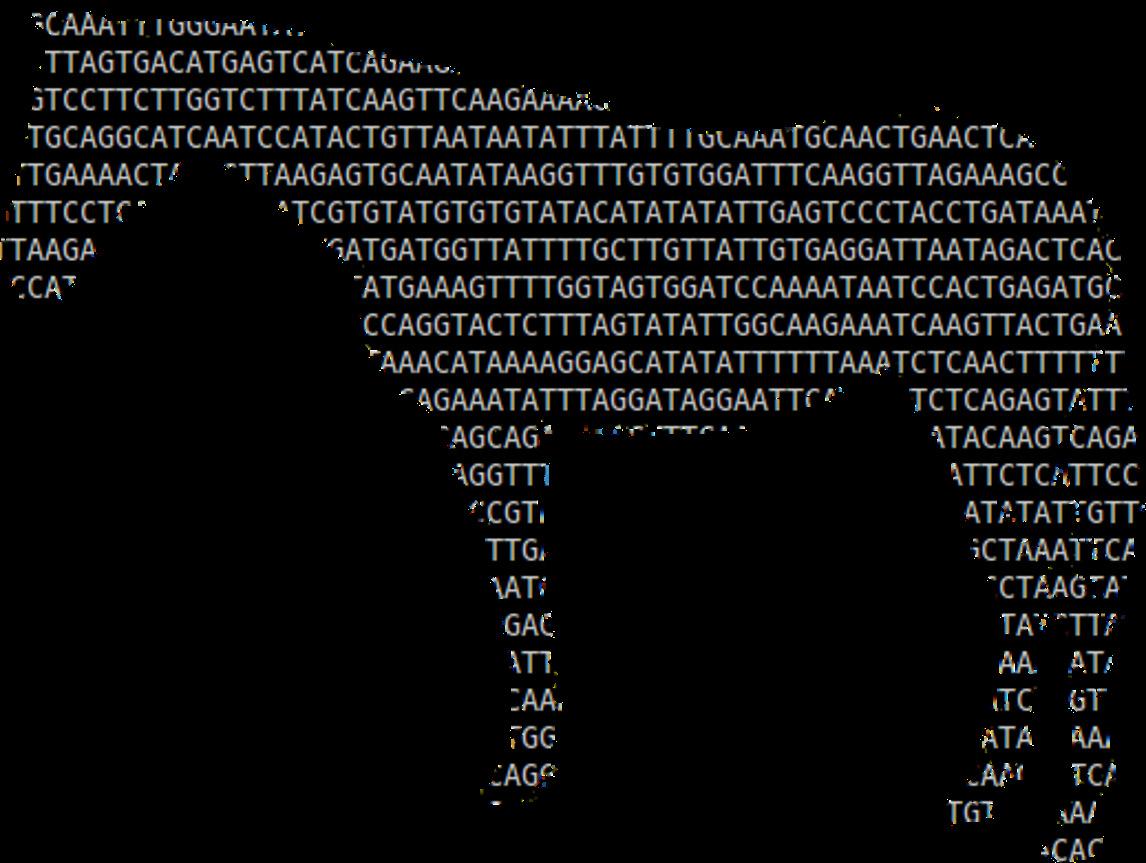
GRAPHIC COURTESY DRS. JAMES MACLEOD AND MATT HESTAND.
to collect samples from as many animals as possible and will begin by fully sequencing the genomes of as many as 100 of them. As resources become available, we will work to analyze as many of the samples as possible so we have an understanding of what the population structure is now so that we can monitor how genetic diversity changes over time,” he said.
PANDORA’S BOX?
When it comes to genetic studies, there’s also sometimes a concern by horse owners and breeders that DNA tests will reveal that a bloodline or particular valued horse has a bad genetic variant (one of two or more versions of a gene). If so, does that mean they shouldn’t breed that animal?
Actually, genetic testing may provide more opportunities than problems for breeders. First, when a stallion is suspected of harboring a deleterious genetic trait, breeders will shun that stallion (unless his offspring are great runners!). However, genetic testing can exonerate the reputation of a suspect stallion. Second, if a stallion is found to carry a genetic variant that is undesirable, breeders can use genetic tests to design matings and produce offspring in a manner to avoid the deleterious trait.
This is the way that Arabian horse breeders approached the discovery of the recessive deleterious variant causing the disease severe combined immunodeficiency (SCID) in Arabian horses. Once a test was invented, they could have culled all carriers. However, the carriers presumably had a lot of good genetic variants. With the use of the test, it was possible to avoid matings that produced SCID and even purchase offspring from SCID carriers that could be certified as free of SCID.
The role of genetics research and genetic testing is to provide breeders with useful information that allows them to make informed decisions about breeding. Genomic research can turn genetics from a black box into a useful tool.
Kalbfleisch also reiterated that researchers work hard to maintain confidentiality of the specific horse genetic information they work with because they do recognize the concerns horse owners and breeders have.
Partnerships with the industry are important
On Kalbfleisch’s wish list for more data? He said it would be to engage more productively with producers and with veterinarians in order to build a conduit for research to help with the problems people have. Having access to samples and really good phenotype information is key.
EXCITEMENT ABOUT WHAT THE FUTURE HOLDS
When asked what excites him about his research, Kalbfleisch was quick to respond. “We know the genome of the horse and where the genes are and much about what they do. The cell doesn’t know anything about any of that. It just functions. It reacts according to the physical and chemical laws that govern everything else. What I’d like to do is to move all of this to where we’re no longer applying these biological or biochemical rules, but to where we’re just using more simple physics and chemistry. And just see how a cell is going to behave when it has a genome that looks like your horse’s,” he said.
“It’s just the opportunity to fill in all of those blanks, all this stuff that we don’t know. Maybe not in 10 years, but in my lifetime. That’s exciting,” he said.
| Holly Wiemers, MA, APR, is the communications and managing director for UK Ag Equine Programs.
EQUINE INNOVATORS: RACETRACK SURFACES WITH DR. MICK PETERSON
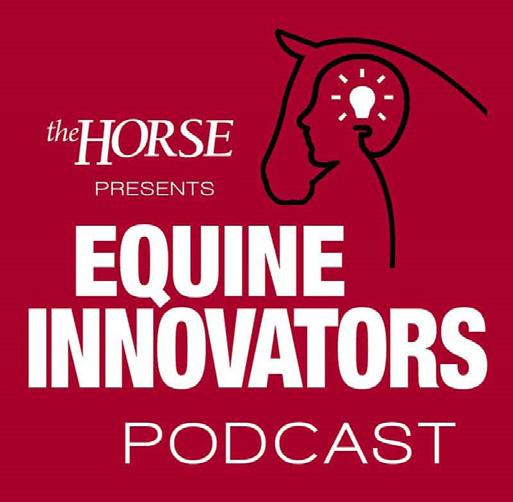
Learn about the science behind creating safe racing surfaces from Mick Peterson, PhD, director of the University of Kentucky’s Racetrack Safety Program and faculty member within the Department of Biosystems and Agricultural Engineering. Properly preparing racetrack surfaces is imperative for horse and jockey safety. It requires selecting the right materials, monitoring moisture content, watching the weather and finely tuned maintenance from a highly trained crew. In this Equine Innovators podcast, we talk to Peterson. As a bioengineer, he and his team studies how horses interact with track surfaces to help improve safety and performance. They also monitor tracks throughout the United States. This podcast is the fourth episode in our “Equine Innovators” podcast series, brought to you by Zoetis. You can find the Equine Innovators podcast on TheHorse.com, Apple Podcasts, Spotify, Stitcher and Google Podcast. Source: TheHorse.com
ROOTS: BUILDING HEALTHIER PASTURES FROM THE GROUND UP
Horse owners and horse farm managers often think of pastures starting at the soil and representing all the biomass seen above the soil. But truly healthy pastures also have a rich network of roots below the surface. Astute mangers consider these when making management decisions. The roots of pasture grasses and legumes serve many functions: retrieving nutrients, holding soil in place during wet weather, housing a host of beneficial microbes and storing carbohydrates and minerals to support regrowth and overwintering. If you buy into the phrase, “no hoof, no horse,” consider that a similar phrase, “no roots, no pasture,” is also accurate.
PLANT PHYSIOLOGY 101
We all should know the basic concept of photosynthesis. Plants capture sunlight and use that energy to make sugars from carbon dioxide in the air. These sugars are the source of energy for growth or to store for later use. This energy, in the form of sugars or starch (carbohydrates), is stored at the base of the plant and in the roots and used to regrow leaves when the plant is defoliated by grazing animals, mowing or hay harvesting. Repeated, frequent defoliation will deplete the carbohydrate stores and physically shrink the root system until it lacks the volume to absorb enough nutrients or water to survive. Better management that results in thick and robust roots allows plants to quickly recover after defoliation and to better survive droughts because they are able to reach deeper into the soil in search of water and other nutrients. Think of the soil surface as a mirror, whatever is growing above it is also what is growing beneath it.
GRAPHIC: PLANTS THAT ARE MAINTAINED SHORT WILL HAVE LESS ROOT VOLUME AND THEREFORE WILL BE MORE SUSCEPTIBLE TO DROUGHT AND OTHER STRESSES (LEFT), WHILE PASTURES MAINTAINED IN A TALLER, LEAFY STATE WILL HAVE A MORE ROBUST ROOT SYSTEM ABLE TO CARRY THE PLANT THROUGH PERIODS OF STRESS (RIGHT).
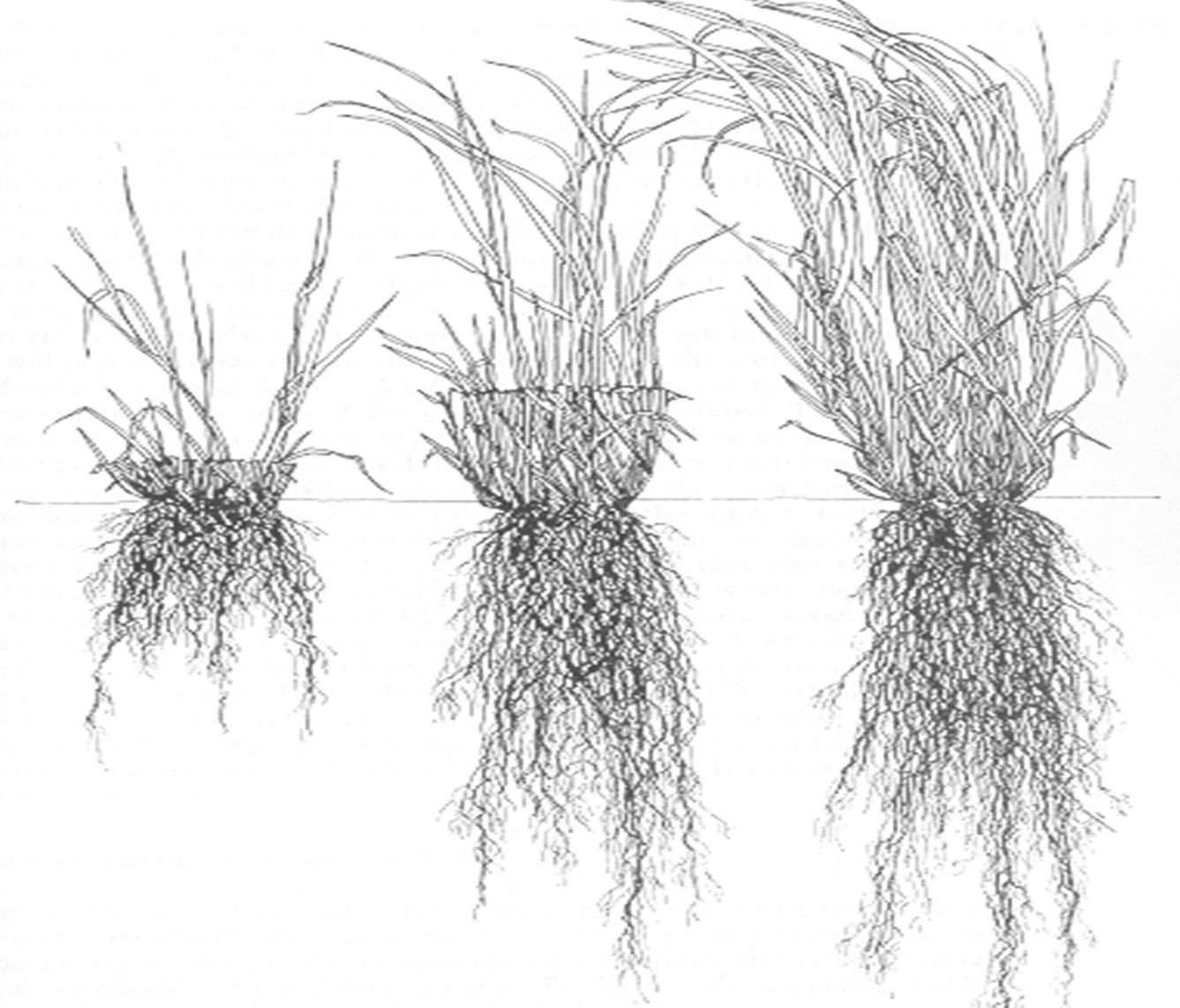
BUILDING GOOD ROOTS FROM THE BEGINNING
When new pastures are being established, it is often recommended to take a hay harvest before the pasture is introduced into the grazing rotation. There is no magic to this recommendation at all, simply that most managers will not cut hay when the grass is only a few inches tall. By waiting for a hay harvest, it gives the plants time to grow tall, and therefore establish deep roots. Keep in mind that once cool season grasses begin to put up a seedhead (elongate), they are no longer using energy to build leaves or roots, because all energy has been diverted to seed production. For this reason, a hay harvest on newly-established pastures should be at the boot to early head stage (just as the seedhead is emerging from the leaf sheath). This will result in lower yield, but higher quality hay, as well as encourage the plants to grow down (roots) and out (new tillers) and form a dense sod. If you don’t want to harvest hay, simply keeping the pasture mowed high will accomplish the same thing. Cool season grass pastures should be allowed to grow to 8-10 inches of leafy growth before grazing. Strategic mowing of new pasture is needed to keep weeds from overshadowing new grasses and to prevent seedheads from forming. Adjust the mower to clip pastures above the new grasses, therefore only removing weeds and seedheads. If pastures are allowed to get too tall and rank (excessive weeds or seedheads) then mowing will cause a thatch layer that can lay on top of new grasses and shade them out. If this is the case, then you may need to use a tedder to spread out the clumps or heavy thatch or remove the excess material as hay.
MANAGING GRAZING FOR GOOD ROOTS
For those of us with established
pastures, we can still have a great effect on root growth by controlling defoliation. This means 1) not mow pastures too frequently or closely and 2) graze rotationally, allowing pastures time to rest and rejuvenate. Pastures are not lawns or golf courses and shouldn’t be managed as such. Mowing should not be dictated by the calendar but instead by the pastures and the needs of the animals grazing on them. Here are the best times/reasons to mow a pasture: • When animals have just been rotated off – this is to even out the pasture, so typically mowing around 3-4 inches • When seedheads are growing - mow high enough to clip the seedheads of grasses or weeds but leave green vegetative material, which will drive regrowth and keep the ground shaded, typically around 8 inches. • Before seeding – this is to open up the canopy, allowing sunlight to reach the soil surface for new seedlings.
In this case, mow as close as possible.
Horses are notorious spot grazers, coming back to the same location to graze again and again while ignoring other areas. This could be because it is near the barn, a buddy in a neighboring pasture, shade or water or just out of habit. Because of this, even low stocked pastures will have some areas that are overgrazed and needing rest. Horse farms are also frequently overstocked, so often pastures are significantly overgrazed. In both cases, giving pastures a rest is vital to maintaining healthy grass and roots. Rest periods are best dictated by forage needs and availability, but a simple two weeks on, two weeks off rotation is a great place to start and will likely still yield many benefits. Pastures will be more resilient if you can maintain a 3 to 4 inch residual height as much of the year as possible, especially during the hotter months. To demonstrate the effects of rotational vs. continuous grazing, the UK Forage Extension team put together a time lapse video of two orchardgrass plants. One plant was clipped monthly at 3.5 inches to simulate rotational grazing (right) while the other was clipped weekly to 1 inch for four weeks (left) to simulate continuous horse grazing. Five days of regrowth were then captured by video. The plant that was rested for a month with a 3.5- inch residual produced significant regrowth in just five days because it had sufficient root reserves that allowed it to rebound quickly. The continuously grazed plant produced little growth because root reserves were exhausted, and the low cutting height left few leaves to generate new energy. You can view the full video here. One last thing to consider in root management is soil fertility. If soils are deficient in any required nutrient, the growth of the entire plant will be negatively impacted. Phosphorus is especially important to root growth and development
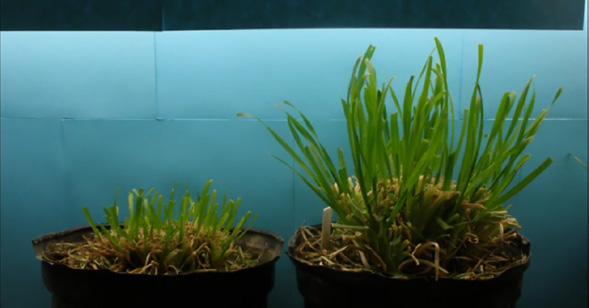
but is rarely low in soils in Central Kentucky. A soil test can easily determine if phosphorus or other soil amendment is needed. For most pastures, fall nitrogen applications will also boost root growth as nitrogen stimulates grass growth and similarly speeds root growth. Next time you walk through your pasture, take a moment to consider what you see above ground, and what that suggests exists below.
| Krista Lea, MS, coordinator of the University of Kentucky’s Horse Pasture Evaluation Program, and Jimmy Henning, PhD, extension professor in the Department of Plant and Soil Sciences, provided this information.
FORAGE TIMELY TIPS:
If not already done, soil sample and apply fertilizer as needed.
Plant perennial grasses and legumes. Consider using a novel endophyte tall fescue.
Harvest hay as needed. Do NOT harvest alfalfa after mid-September.
Scout pastures. Identify perennial weeds and woody brush. Consult an agricultural professional to determine the control strategy.
Closely monitor livestock and do NOT overgraze. Pasture plants accumulate energy reserves in the fall that help them overwinter and regrow in the spring.
Feed hay to allow pastures to stockpile for winter grazing.
Rest native warm-season grass fields until after frost for better winter survival.
Source: University of Kentucky Forage News, August 31, 2020
This month, I had the opportunity to speak with doctoral candidate Morgan Pyles, MS, before she left for her new job. As a graduate research assistant under Laurie Lawrence, PhD, professor in the University of Kentucky’s Department of Animal and Food Sciences, Pyles has researched issues related to mare milk composition and foal digestive health. She received two degrees from UK: a Bachelor of Science in equine science and management and Master of Science in animal sciences, specializing in equine nutrition. She will defend her doctoral work shortly and expects to receive her PhD in animal sciences, specializing in equine nutrition.
FIRST, CAN YOU FILL US IN ON YOUR NEW POSITION SO WE CAN CONGRATULATE YOU ON THIS EXCITING NEW PHASE OF YOUR CAREER? I KNOW YOU ARE TEACHING THIS SEMESTER. IS THAT PART OF THE NEW POSITION?
I have accepted an equine science lecturer position at the University of Minnesota, Crookston. The four-year equine program offers a range of equine science and equitation courses. I am teaching a variety of equine classes, including equine exercise physiology, reproduction, horse production and western equitation.
YOU ARE ON TRACK TO RECEIVE THREE DEGREES FROM UK. DID YOU THINK ABOUT GOING ELSEWHERE FOR ONE OF THEM? WERE YOU WORRIED THAT THREE DEGREES FROM THE SAME INSTITUTION WOULD BE A LIMITING FACTOR?
Yes, I will have three degrees from UK. However, before coming to UK, I attended Central Wyoming College, where I obtained an AAS in horse management and two credentials. The equine program in Wyoming was quite different than here at UK and provided diverse experiences for me. Toward the end of my MS, I did consider going elsewhere for my PhD. I was in contact with several other schools and had a wonderful opportunity for a doctoral fellowship at the University of Florida. However, Dr. Lawrence also offered for me to stay with her for my PhD. Deciding where I wanted to spend the next four to five years working toward a PhD is an important decision, and it wasn’t mine alone. I have a husband and a son, and they were very important in making that decision as well. Many factors went into my decision to stay at UK. First, I don’t think I could find a better mentor to study under than Dr. Lawrence. She has an unending wealth of knowledge and I wanted to learn as much as I could from her. When deciding to start a PhD program, it is very important to be passionate about the research that you are going to be entrenched in for the next several years. I felt I had just barely scratched the surface of my research area with my MS project and was excited about the possibility of continuing my mare and foal research through my PhD program. At about the time I was finishing my MS, our department hired a new assistant professor, Dr. Rachel Schendel, who is an expert in carbohydrates. One of my interests for my PhD research was to investigate carbohydrates in mare milk, and she was just the person. Not only did we have great options and support for doctoral work option at UK, but we also have great support in our personal
PHOTO COURTESY MORGAN PYLES.
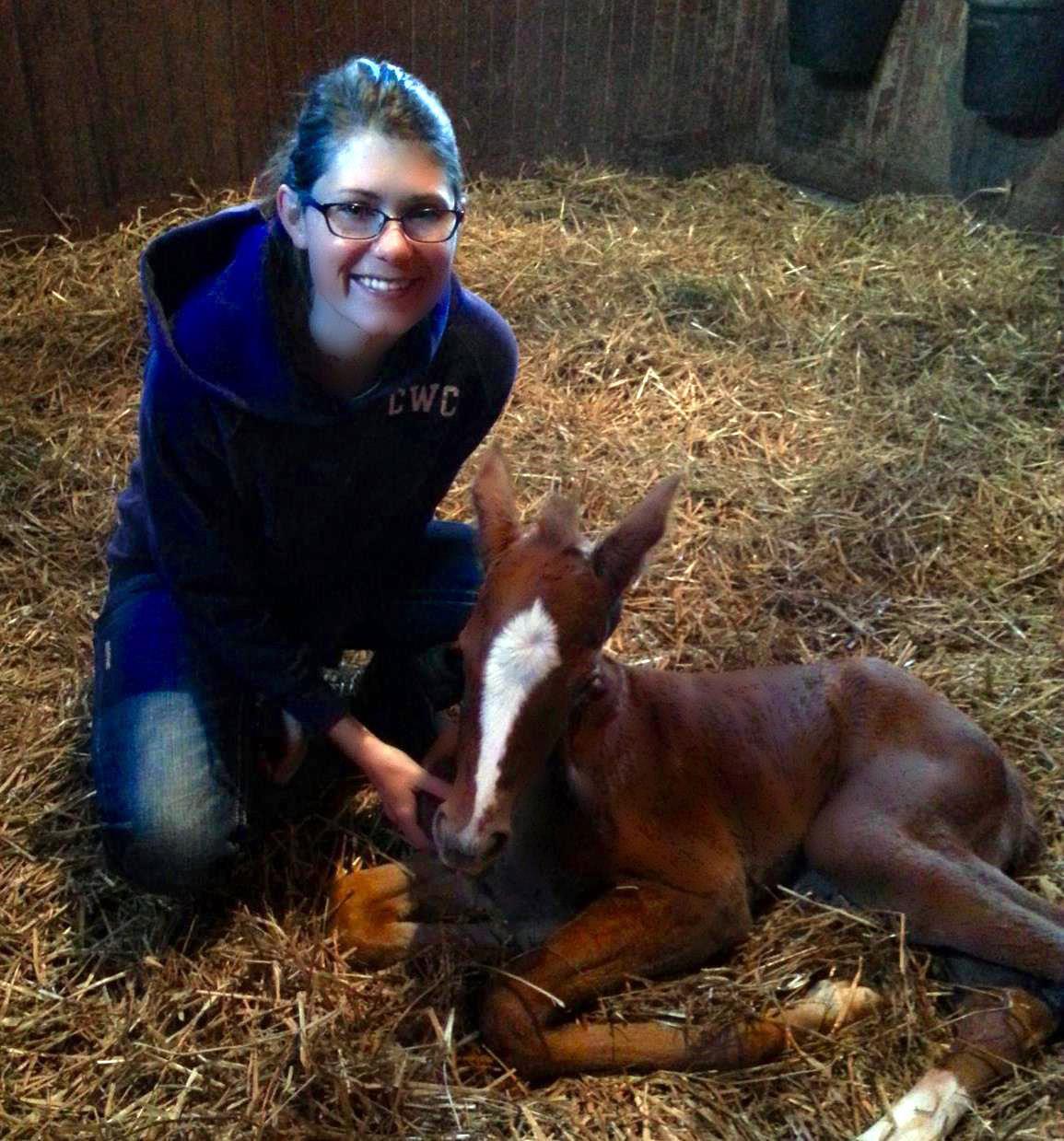
lives. I went into my PhD with a 3-year-old, so having support was invaluable. My husband’s parents live in Kentucky and have been our go-to babysitters over the years when I had research studies, classes and all the business that comes with graduate school. So together, being able to do the research that I wanted to do, with the mentor that I had and support system available to me, staying at UK was the best option for me and my family. There are a lot of different opinions on having several degrees from the same institution. I have been fortunate to be able to work in many different labs across the university, including the USDA ARS Microbiology lab, a food science lab, ruminant nutrition lab and Regulatory Services. Being able to collaborate and make connections is important regardless of where you earn your degrees and I think I have been successful in doing just that. I think that if you are productive, involved, actively seek out opportunities to diversify your experiences, then the location of your degree programs is somewhat irrelevant.
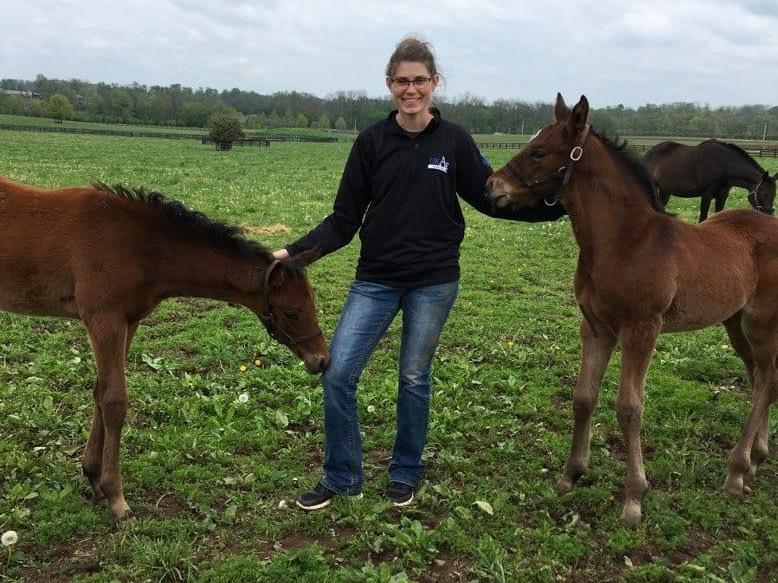
IF GRADUATE SCHOOL HADN’T WORKED OUT, DID YOU HAVE A FALLBACK CAREER IN MIND? WHAT WAS IT?
To be honest, not really. I have wanted to teach and be involved in academia since my first TA experience in Wyoming. That was my goal and I was going to work hard until I got there.
HOW DID YOU GET INTERESTED IN EQUINE NUTRITION? HOW DID YOU GET TO WORK IN DR. LAWRENCE’S LAB?
I knew I wanted to get some research experience during my undergrad years and both nutrition and reproduction piqued my interest during my undergraduate program. My undergraduate advisor, Dr. Coleman, connected me with Dr. Ed Squires and the equine reproduction group in the Veterinary Science Department. I was hired as an undergraduate research assistant to primarily help on a stallion study; Dr. Lawrence was a collaborator on the study as it involved a feed supplement. Through that study, I met Dr. Lawrence and when she found out I was looking for a graduate position, she offered me the position. I was very fortunate that I was in the right place at the right time to be able to start my graduate
PHOTO COURTESY MORGAN PYLES.
program in Dr. Lawrence’s lab. Dr. Lawrence already had the funding for my MS project, which evaluated the effect of starch source on fecal bacteria in mares and their foals. I also conducted an additional study during my MS program that investigated changes in fecal bacteria with probiotic use during an antibiotic challenge. Through my master’s program, I really fell in love with nutrition and came to realize that nutrition can have an impact on every other area of equine science.
YOU HAVE 18 PUBLICATIONS TO YOUR CREDIT. WHAT DID YOU LEARN ABOUT THE PROCESS OF WRITING RESEARCH ARTICLES FOR PEER-REVIEWED JOURNALS?
Writing in the sciences takes a lot more time than you think it will take. Reading articles and critically evaluating them is a great way to learn how to write. We have weekly lab meetings where we will present and discuss journal articles. I always learn something by doing this, what to do, not to do, areas that needed more description, etc.
WHAT SURPRISED YOU MOST ABOUT FOLLOWING THIS ACADEMIC PATH? WHAT DID YOU FIND MOST REWARDING? I really enjoy being with the horses. Most of my research has been with mares and foals, and let me tell you, I have gained a lot of respect for these broodmares. They are tough, resilient and are fighters, putting in time and effort behind the scenes to produce future generations. I love being able to follow the foals that have been on my studies as they are sold at Fasig-Tipton and move on to have great careers! I also really enjoy sharing my research at various conferences and events. It is so rewarding to see the end result of all of the hard work that went into conducting the study, feeding, collecting samples, lab work and analyzing samples. Putting it all together to tell a story and share that story with others is exciting to me.
WHAT HAVE YOU ENJOYED MOST ABOUT WORKING IN DR. LAWRENCE’S LAB?
The people that I have worked with through Dr. Lawrence’s lab are some of the best! Words cannot express how much our lab techs, Susan Hayes and Andrea Crum, mean to me. They have been there through all of the highs and lows of grad school, spending hours and hours at the farm and in the lab. I have really enjoyed the support in Dr. Lawrence’s lab. When I started my PhD program, I wanted to analyze milk oligosaccharides in mare milk. No one had done that before at UK and I had the support I needed to help develop and validate the assay.
CAN YOU DESCRIBE WHAT YOUR ACTUAL WORK AS A DOCTORAL CANDIDATE WAS LIKE SO READERS HAVE AN IDEA OF WHAT YOU DID ON A DAILY OR WEEKLY BASIS?
It was quite varied, as expected, depending on where I was in my program. I was taking classes each fall and spring semester during the first two years of my PhD program. The classes I took were decided upon by through discussions with Dr. Lawrence and my PhD advisory committee and included classes in animal science,
statistics, teaching and biochemistry, among others. My research was with mares and foals; therefore, my studies were pretty much scheduled for me. Mares are having foals in the spring whether I was ready or not. During research studies, the graduate student is responsible for the care of those horses, meaning I was there morning and afternoon, every day, for the duration of the study to feed, sample and care for the horses. I would sample foals throughout their first month after birth, so my studies typically ran from about February to June. Some of the samples that I collected involved fecal samples from foals. We found out that foals do not defecate very frequently in their early days, thus I have spent countless hours watching and waiting for foal feces! All the while, I was still taking classes. I knew from the beginning of my graduate career that I wanted to eventually have a teaching component to my career. Because of that, I sought out opportunities to serve as a TA or guest lecture when I could. About two years into my PhD program, I took my qualifying exams, and was done with classes. For the past two years I have continued with research projects, lab work, presenting and writing. I also was hired as an adjunct faculty at Georgetown College to teach an animal nutrition course in 2018. In summary, my responsibilities as a grad student included taking classes, conducting research (feeding and caring for the horses and sampling), analyzing samples in the lab, teaching/helping with classes and presenting research findings at conferences.
YOU HAVE DONE A LOT OF RESEARCH ON MARES AND FOALS. WHICH DO YOU PREFER TO WORK WITH, AND WHY? Watching foals grow and develop is very satisfying to me. Through my research, we are trying to figure out what is going on in their little gut and how to keep these foals as healthy as can be. I love that my research focuses on
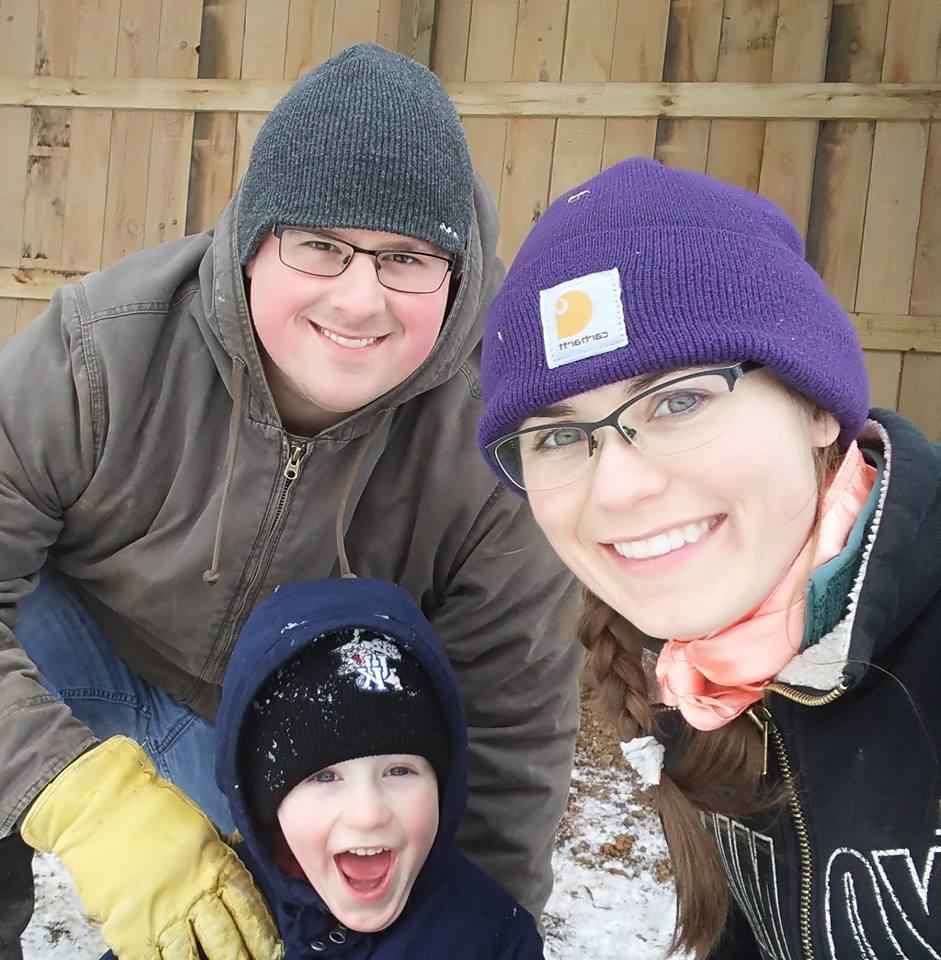
trying to improve the health of the foal by understanding the factors that may predispose them to developing gastrointestinal upsets.
WHAT ARE SOME OF YOUR PLANS FOR THE COMING YEAR(S), EITHER IN THE LAB/SCHOOL, WITH YOUR HORSE OR PERSONALLY?
Getting settled into Minnesota. I am really excited to get involved in the equine industry in Minnesota. I am hoping to get back to competing on my horses, hopefully get back to rodeoing and some reined cow horse shows.
NOW THAT YOU ARE FINISHED WITH YOUR DOCTORAL WORK, DO YOU THINK YOUR LIFE WILL SLOW DOWN A LITTLE? WHAT ARE YOU LOOKING FORWARD TO DOING MOST NOW THAT YOU ARE ALMOST DONE?
Well, I am still finishing up writing my dissertation and will be doing that remotely while teaching in Minnesota. I am planning to defend within the next six months. So no, I don’t think things will slow down quite yet with starting a job while finishing up my dissertation. But when I was contacted about this position, I couldn’t pass up the opportunity for a great job, especially during these difficult times. I do have two horses. One is somewhat retired, the other I have been able to ride through graduate school, but not quite as much
PHOTOS COURTESY MORGAN PYLES.
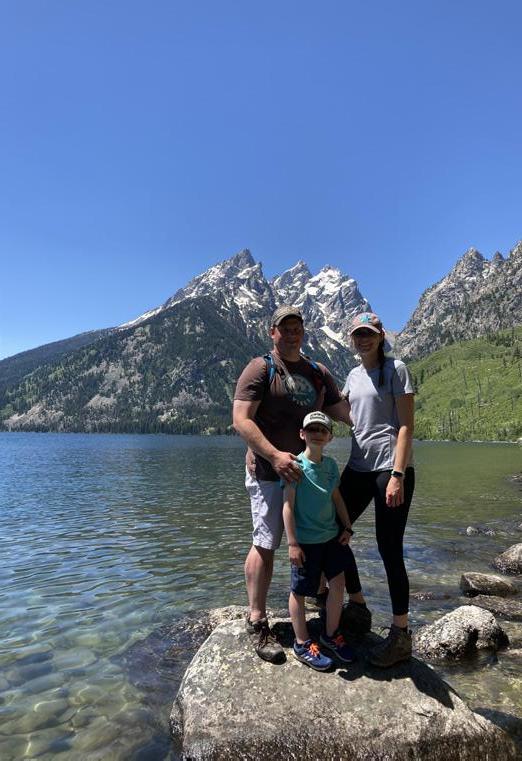
as I would like. Before coming to Kentucky, I roped, barrel raced and started in reined cow horse shows.
I UNDERSTAND YOU ARE INVOLVED IN THE EQUINE ALUMNI AFFILIATE NETWORK. CAN YOU TELL ME ABOUT THAT EXPERIENCE?
I have been involved with this alumni group for the past four years. We started out just as a small group of a few alums that Kristen Wilson had organized to help plan a tailgate at Rolex. We had so much fun doing that, and we saw the need to continue organizing events and activities to bring together alumni from UK’s equine undergraduate program. I have been part of the executive committee as the secretary since its inauguration, and we became an official alumni affiliate network in 2019. We have such wonderful alums serving on our board of directors, and we have been able to accomplish such great things in the few years we have been together. I have really enjoyed the experience and will continue to serve as the secretary. I see it as a way to give back to the program that has done so much for me.
| Karin Pekarchik, MS, senior extension associate for distance learning and founder of the UK Female Equestrian Health and Wellness Community of Practice, provided this information.

